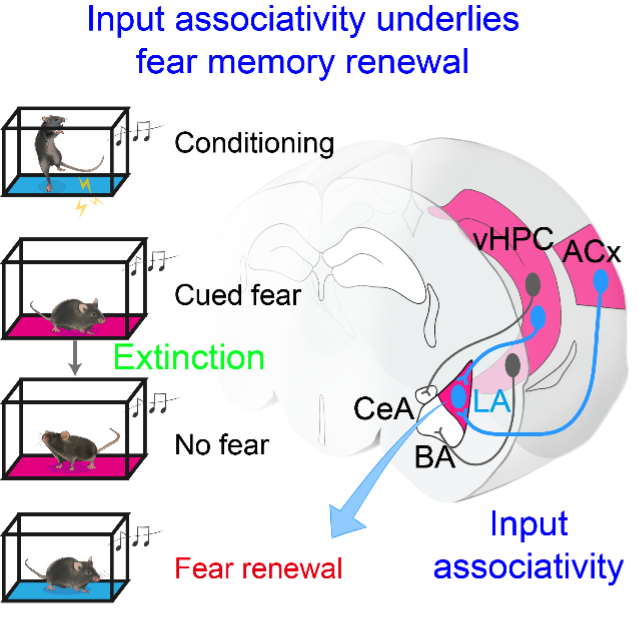
Synaptic associativity, a feature of Hebbian plasticity wherein coactivation of two inputs onto the same neuron produces synergistic actions on postsynaptic activity, is a primary cellular correlate of associative learning. However, whether and how synaptic associativity are implemented into context-dependent relapse of extinguished memory (i.e. fear renewal) is unknown. Here, using an auditory fear conditioning paradigm in mice, we show that fear renewal is determined by the associativity between convergent inputs from the auditory cortex (ACx) and ventral hippocampus (vHPC) onto the lateral amygdala (LA) that reactivate ensembles engaged during learning. Fear renewal enhances synaptic strengths of both ACx to LA and the previously unknown vHPC to LA monosynaptic inputs. While inactivating either of the afferents abolishes fear renewal, optogenetic activation of their input associativity in the LA recapitulates fear renewal. Thus, input associativity underlies fear memory. This work was published in National Science Review in 2021 (DOI: 10.1093/nsr/nwab004).